TL;DR
- Reverse image search is a technique that allows you to search online using photos, bringing up similar photos and relevant results.
- Google is a preferred platform for reverse image search, supporting various devices, including desktop computers and mobile devices.
- There are different methods to perform reverse image search, such as uploading an image, using the drag and drop method, or applying a URL.
Have you ever come across a captivating image online and wondered where it came from or if it's being used elsewhere?
Or perhaps you've encountered a suspicious profile picture on a social media platform and wanted to verify its authenticity.
Well, fret no more! Reverse image search is here to save the day. This nifty tool allows you to uncover the origins of an image by searching the web using the image itself rather than relying on keywords.
In this blog post, we’ll see how to do reverse image searches on desktop and mobile from different search engines. Let's get started.
What Is Reverse Image Search?
Reverse image search, as the name suggests, is a tool that allows users to search the internet using images rather than text-based queries. When you upload a photo, the search engine, like Google, browses through billions of images in its database, aiming to find similar images and related results.
How to Reverse Image Search on Desktop?
If you’re conducting a reverse image search on a desktop, you can use more than one search engine to find the source of your image. Hence, one way or another, you can easily find the source or information about the image you’re looking for.
Three desktop browsers to use for reverse image search:
- Google Chrome
- Bing
- Third-party websites such as TinEye
Reverse Image Search Using Google
Here is a detailed step-by-step guide on how to perform a reverse image search using Google:
Step 1: Open a web browser and go to the Google homepage.

Step 2: Now click on the visual search icon located as a second option on the search bar. You will find two options: Drag and drop the image or paster URl. Choose the option that is relevant to you.
We chose the drag-and-drop image option and uploaded our image file.

Step 3: Once you hit search, you will be redirected to the Google Lens tab, where you can find images similar to the ones you uploaded.
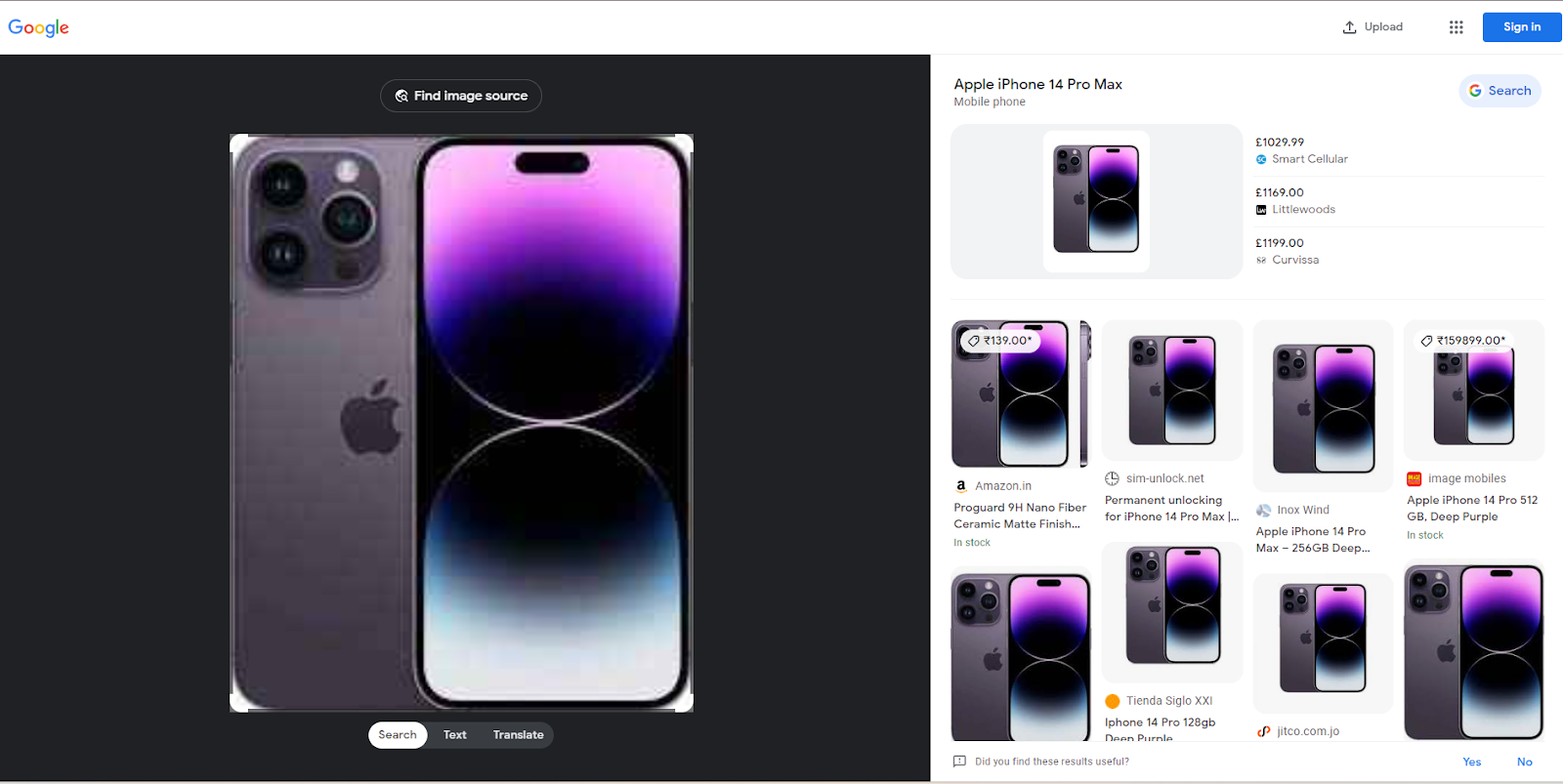
Step 4: Now click “find image source” located above the picture. A new tab will open with the search results.

Google will display websites featuring the image and related images. You can explore these results to gather more information about the image or find similar images.
Reverse Image Search Using Bing
Here’s a step-by-step guide on how to use Bing to do reverse image search.
Step 1: Open bing and click on the visual search icon placed as the last option in the search bar.

Step 2: Similar to Google, Bing also provides two options: Drag and drop or paste an image or URL.
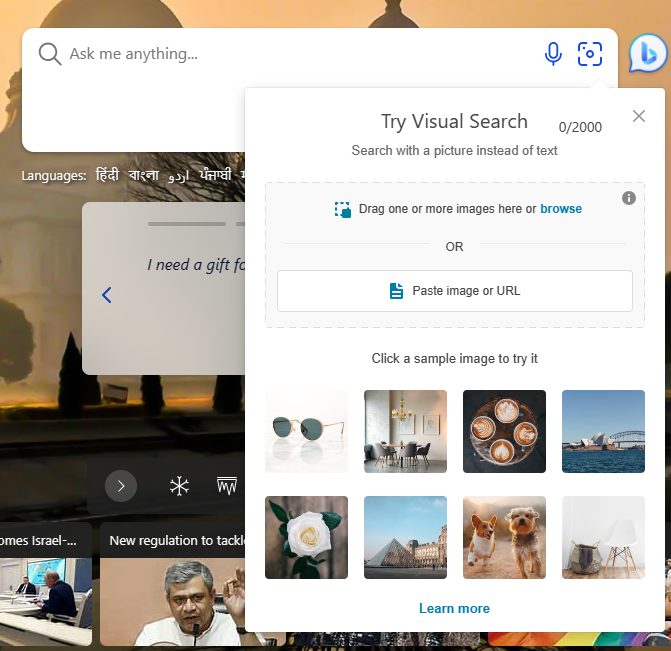
Step 3: Once you feed the image to the search engine in one or the other way provided, you will be taken to the tab where you can find similar images and the URL of the image source.
You can select a particular part of the image to narrow down your search.
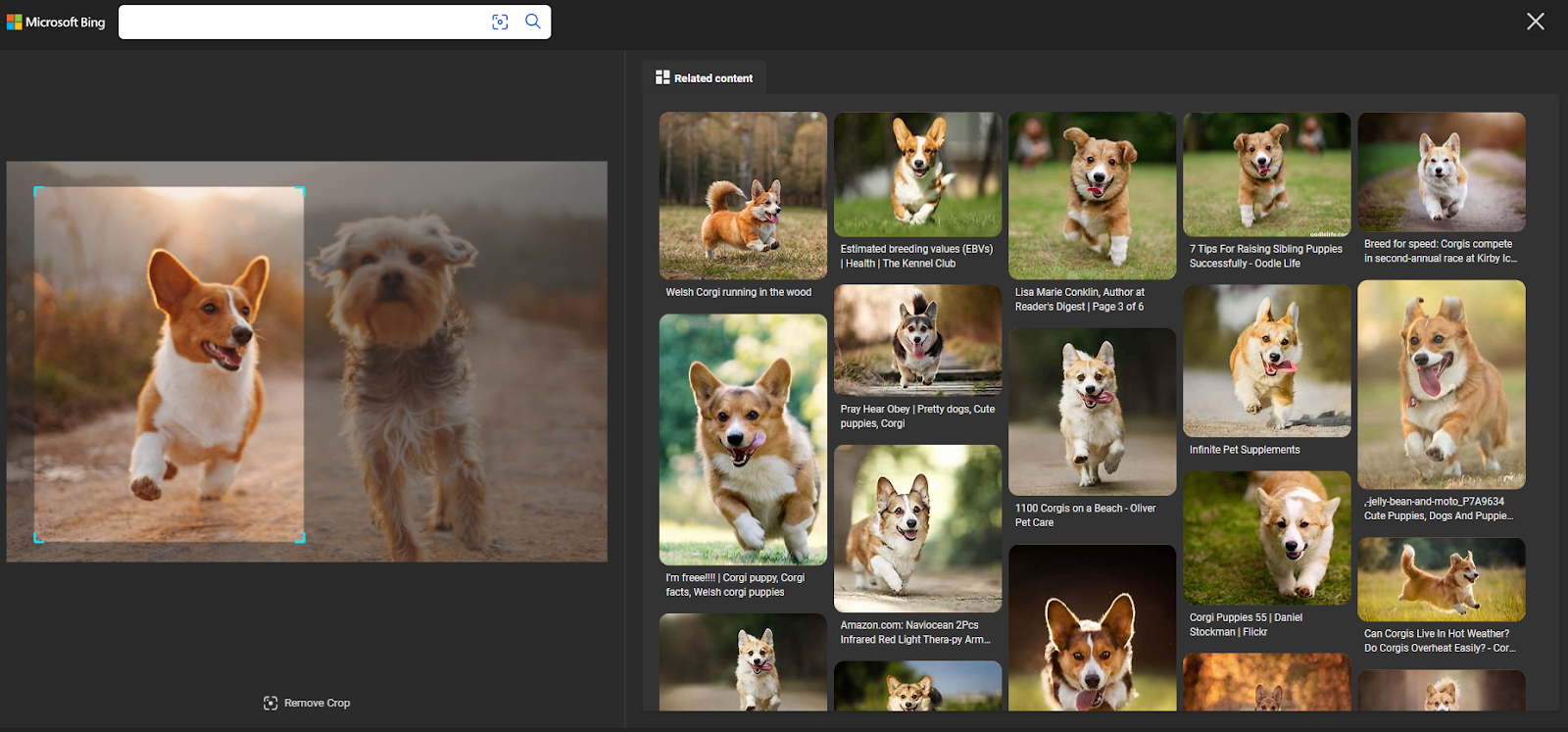
Step 4: You can even select an image from the results to find relevant content and pages with a similar image.
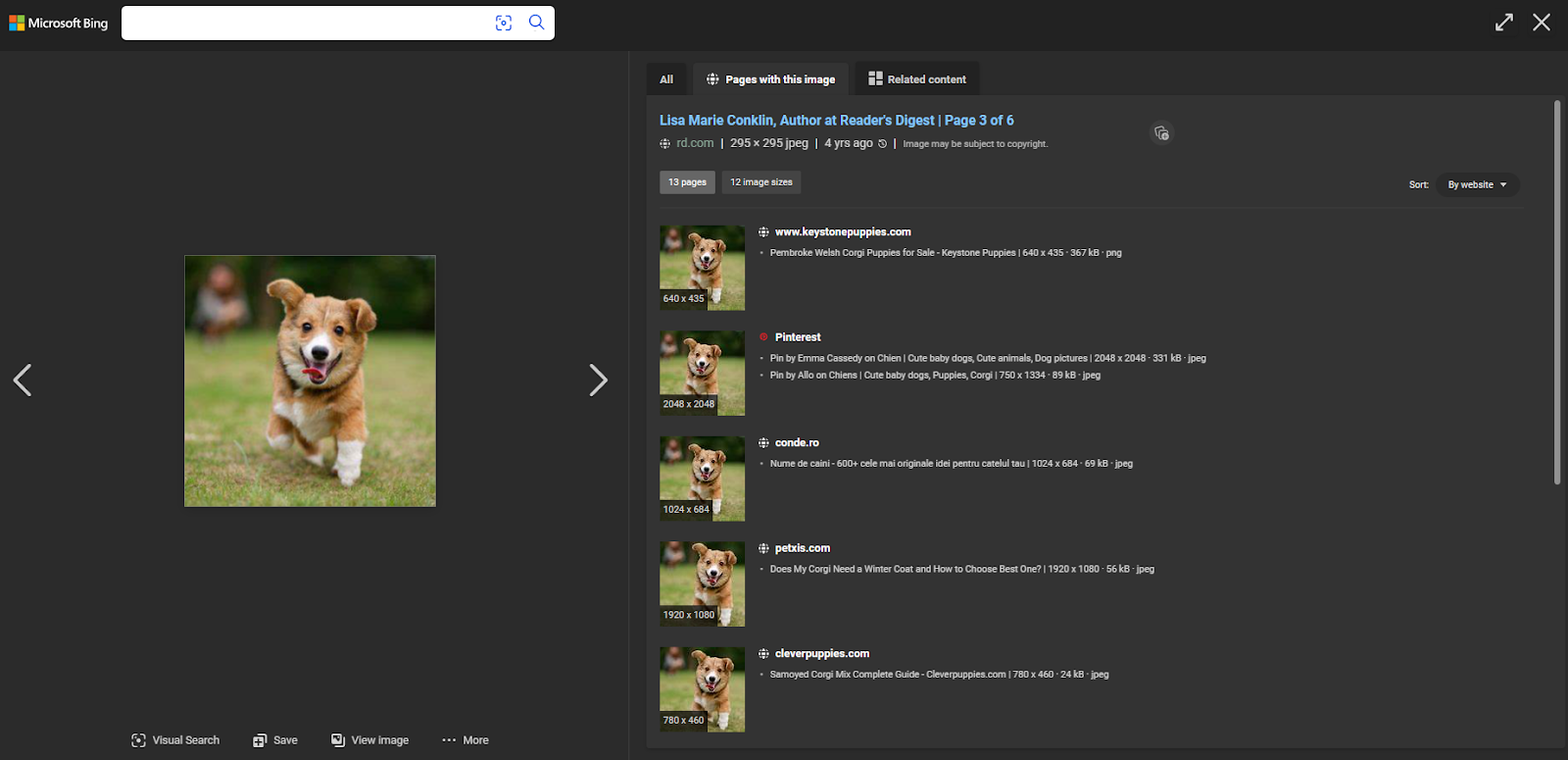
The same step-by-step process applies to search engines like Yandex, but the icons or options might differ. However, using this process to get an idea will help you to navigate other search engines easily.
Reverse Image Search Using TinEye
If you could not find relevant images using Google or other search engines, you can try TinEye, a third-party image search tool, to find the source. Here’s a step-by-step guide on how to do a reverse image search using TinEye.
Step 1: Open tineye.com

Step 2: In the search bar, either enter the URL of the image or upload the file from your computer.

Step 3: Skim the search results to find multiple sources of the image. You can even narrow down your results using their filter options to find relevant websites quickly.
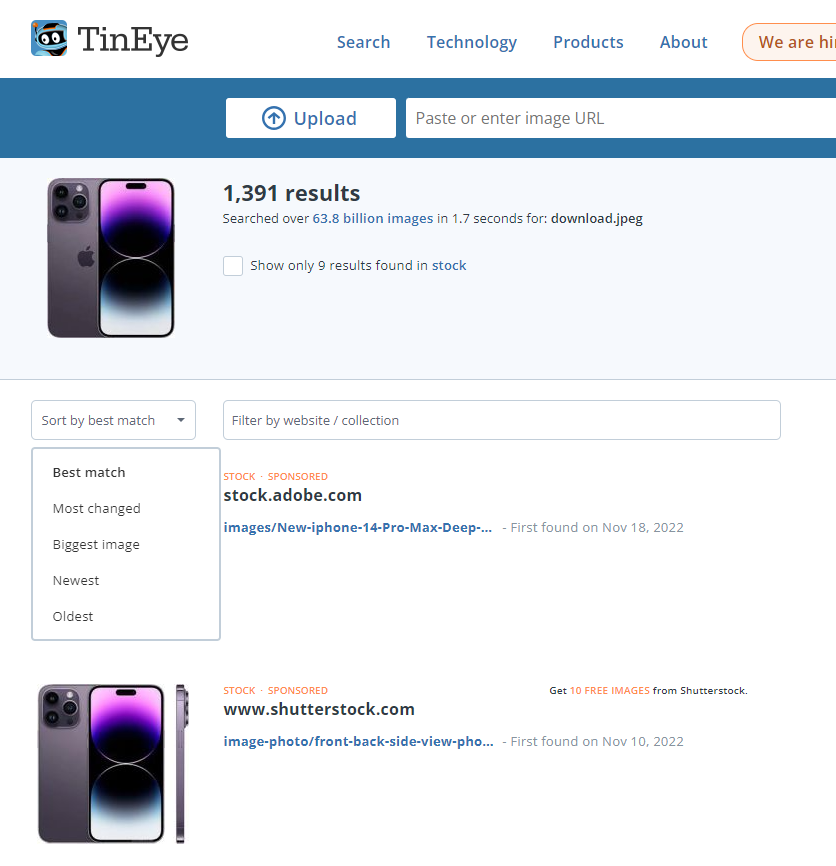
The filtering option makes it easier for users to find the most relevant results quickly; hence, it is an ideal substitute for using search engines for reverse searches.
How to do Reverse Image Search On Mobile Devices?
Using mobile devices to reverse search is relatively similar to using the desktop search. If you’re wondering how the process looks, here’s a step-by-step guide.
Step 1: Open Google or Chrome on your mobile device.
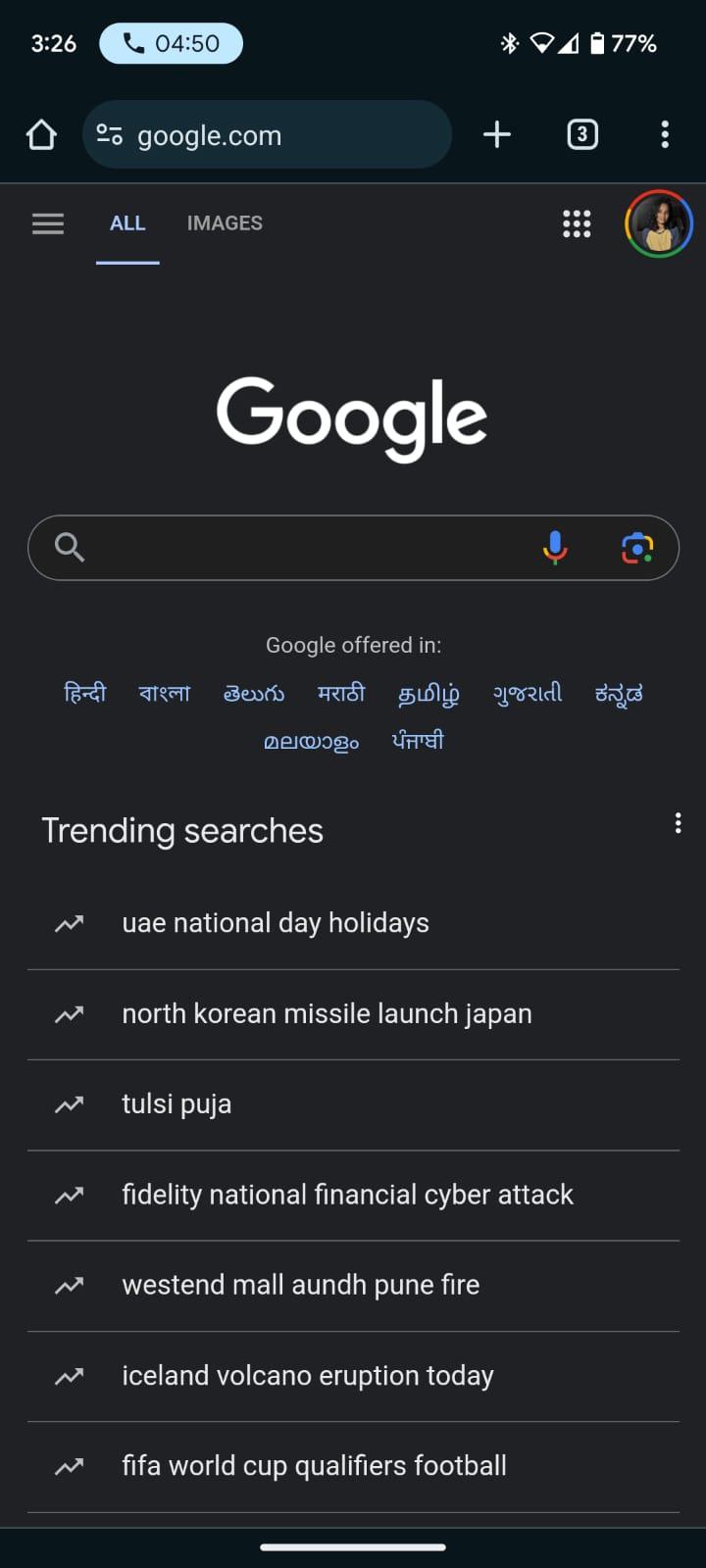
Step 2: Tap on the visual search icon located in the search bar.
Step 3: Now, you’ll be redirected to the Google Lens tab. There, you can scan the product using your mobile camera or choose a file from your gallery to initiate a search.

Step 4: On the result page, you can find images and their source links for quick access.

You can skim through and find the website or product you’re searching for. This way, it is easier for you to find information about your device easily on the go.
Conclusion
With the support of different browsers and devices, including Google Chrome, Safari, or Android and iOS devices, identifying reverse image search becomes even more accessible.
Using the techniques discussed in this post, you can easily and quickly perform reverse image searches on your mobile device. So, give it a try and explore the power of reverse image search to enhance your online experience.
Frequently Asked Questions
What is reverse image search, and how does it work?
Reverse image search allows you to find similar images or the source of an image. By uploading a picture or entering its URL, you can discover related content and information about the image. This tool is useful for verifying sources and finding higher-resolution versions of images.
What are the Benefits of Using Reverse Image Search?
Using reverse image search can help you to identify fake profiles, find higher resolution images, and locate the source of an image.
Can I use reverse image search to find the original source of a picture?
Yes, you can use reverse image search to find the original source of a picture. It allows you to locate the origin of an image, check for copyright infringement, and find visually similar images. This can be helpful for verifying the authenticity of an image.







.webp)


